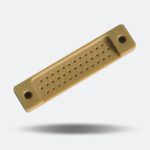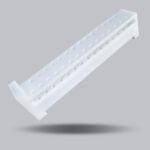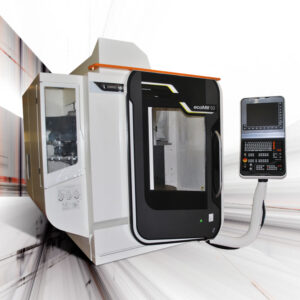The new frontiers of micromachining
Geartec: the company dedicated to micromachining for hi-tech markets
Complex and increasingly smaller geometries are in demand in the electronic components market, but not only. Medical industry, automotive, general automation and telecommunications use miniaturized components. Geartec: from manufacturing facilities to dedicated micro-machining services.
Component miniaturization represents an inescapable trend that stems from the habits that each of us experiences on a daily basis. In fact, electronic devices that are now indispensable for both life and work offer increasingly complex performance in spaces that, on the contrary, are becoming smaller and smaller. These de facto cogent technological and manufacturing challenges and demands have become increasingly pervasive, especially in the last five years, not only in the electronics, but also in the semiconductor, automotive and telecommunications, and surgical instrumentation sectors. The production of such devices requires what is commonly referred to as micromachining, i.e., polymeric components less than 5 mm in size. In all cases, such productions are accompanied by complex geometries, very thin wall thicknesses, holes with minimal diameters and very tight tolerances. A considerable and very delicate complexity that requires specific skills, equipment and experience.
Hi-tech micromachining
Since 2016, Geartec has decided to dedicate a separate, specially climate-controlled department to micromachining, equipped with machine tools, dedicated control equipment and staffed by skilled technicians. “We are convinced that these high value-added machining operations represent
the real qualitative frontier capable of making a difference, fostering a solid establishment on a market that evolves and grows very rapidly. Currently, the micromachining sector occupies 15 percent of Geartec’s total operations, and we expect to double that within the next 3 years,” explained Giancarlo Piatti general manager of Geartec. But what is needed for micromachining? The first barrier is purely technological and involves having up-to-date machines, equipment and tools that are fit for purpose. Manufacturers must also be able to interface dynamically and constructively with suppliers who can also support the company in the study and prototyping phases. Geartec qualifies as an atypical and very ambitious subcontractor: in addition to its production activities on specification, it is able to flank a consulting service in material selection and application development. By approaching micromachining, Geartec has further refined these vocations by supporting the user with its dedicated experience and expertise. The equipment needed to manufacture and test the chips that now equip every piece of electronic equipment is getting smaller, faster and more precise, and the parts that make them up must therefore miniaturize at the same rate. “We are talking, for example, about drilling with gauges as small as 0.1 mm. In the under-the-hood sector of the automotive industry, we are seeing an increase in components endowed with increasing thermal and mechanical resistance and, therefore, able to guarantee consistent performance. And this is a trend that transversally affects the entire automotive mode, up to Formula 1,” Piatti added.
The quality and characteristics of raw materials represent critical issues that require specific know-how and experience. “We need to be sure that the starting semi-finished products are stress-free so as to guarantee dimensional stability to the finished part, also ensuring the indispensable constancy of properties even between different supply batches,” Piatti continued. Another constraint is staff training: human resources, sometimes even more than technological resources, often constitute the “bottleneck of the process.”
This determines the unavoidable need for trained and specialized operators with good experience in mechanical polymer processing who can ensure consistent and compliant productions.
Production process
At first glance, the production process of parts with small dimensions does not differ much from that of larger parts. However, since these are such delicate machining operations, a dedicated and specific approach must be implemented based on both knowledge but also experience. For example, some key elements for good results include a proper removal strategy to avoid introducing stresses into the parts, as well as the choice of specific tools and a machine setup that does not cause deformation during machining. In some cases, heat treatment should be carried out, usually after the roughing stage, by placement of the parts in special furnaces with accurate settings both in terms of temperature and residence times. Equally accurately, the cooling curve must be controlled. Through these actions, possible stresses caused by the tool, which are detrimental to the dimensional stability of the part, are eliminated.
The control and tracking of these parts, which require tight tolerances and perfect surfaces, is highly dependent on the geometry of the individual parts. To ensure compliance, each part produced at Geartec is checked in the metrology room through an initial microscopic examination and, at this stage, the operator can remove any burrs or machining residues. In the second step, the check is also carried out at the dimensional level, using specific optical measuring systems. Each job is then individually identified throughout the entire production process by means of a barcode-based system that allows all data related to the production process to be recorded. Dedicated micromachining machines are also directly interconnected with the factory logistics system and with the computer archives where production data are analyzed and stored. It is therefore always possible, even at a distance, to retrieve and possibly share with customers and suppliers data on the raw materials used, production and quality of each individual part.
Choice of materials
Among the many polymers available, only a few are suitable for the production of microcomponents. Hygroscopic materials, or those that do not provide tight tolerance ranges for example, should be discarded out of hand. “Today, the market typically adopts Peek (polyetheretherketone) components for small parts subject to high thermal and chemical stresses. Or PET (polyethylene terephthalate) or sometimes even POM (polyoxymethylene) in the case of less stressed applications,” Piatti explained. Finally, the necessary and special attention in processing fiber-filled materials should be emphasized. Although they offer superior mechanical properties, these blends lead to premature tool wear and are often affected by higher levels of tension. Again, precisely to avoid such effects, special heat treatments are used.
Current and future scenarios
The demand for miniaturized polymer components for the electronics, automotive and medical sectors is expected to grow exponentially. In addition, the shift to renewable energy, the rise of electric and hybrid cars, and the development of home automation, electronics, and information technology in the industrial and medical/diagnostic fields result in a consequent need for processors and computers with superior memory and computing power. Geartec therefore intends to continue its investment in this area to increasingly qualify itself as a supplier of excellence and a true partner. “The possibility of supplying not only individual parts, but pre-assembled and tested systems and assemblies represents a high value-added opportunity that panders to the needs of the market and of customers who prefer to be able to rely on and coordinate with highly qualified suppliers,” Piatti concluded.






Investment in micromachining
Geartec has carried out a full-bodied production efficiency process over the past two years, despite the pandemic, through the optimization of resources and its digital expertise with new strategic implementations. The 5-axis milling center, this is the DMG Mori CMX50U milling center with a high-speed spindle, installed in 2020, has significantly increased the production capacity of the micromachining department. The company expects a further 30 percent increase in the medium term. To accommodate this further increase, Geartec has already purchased a new 5-axis continuous milling center from DMG Mori, model DMU50, which will be installed in June 2022.






